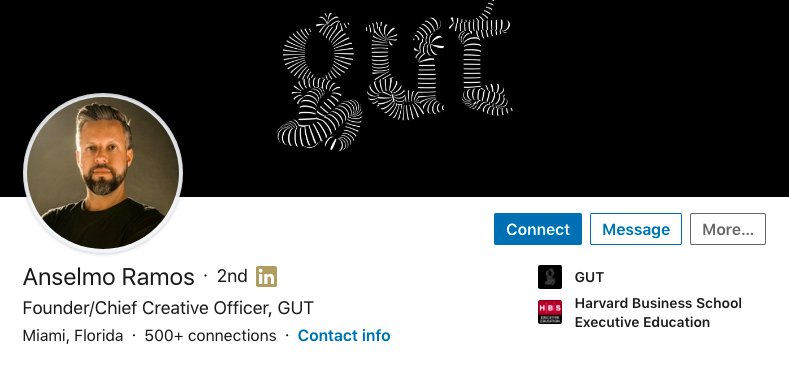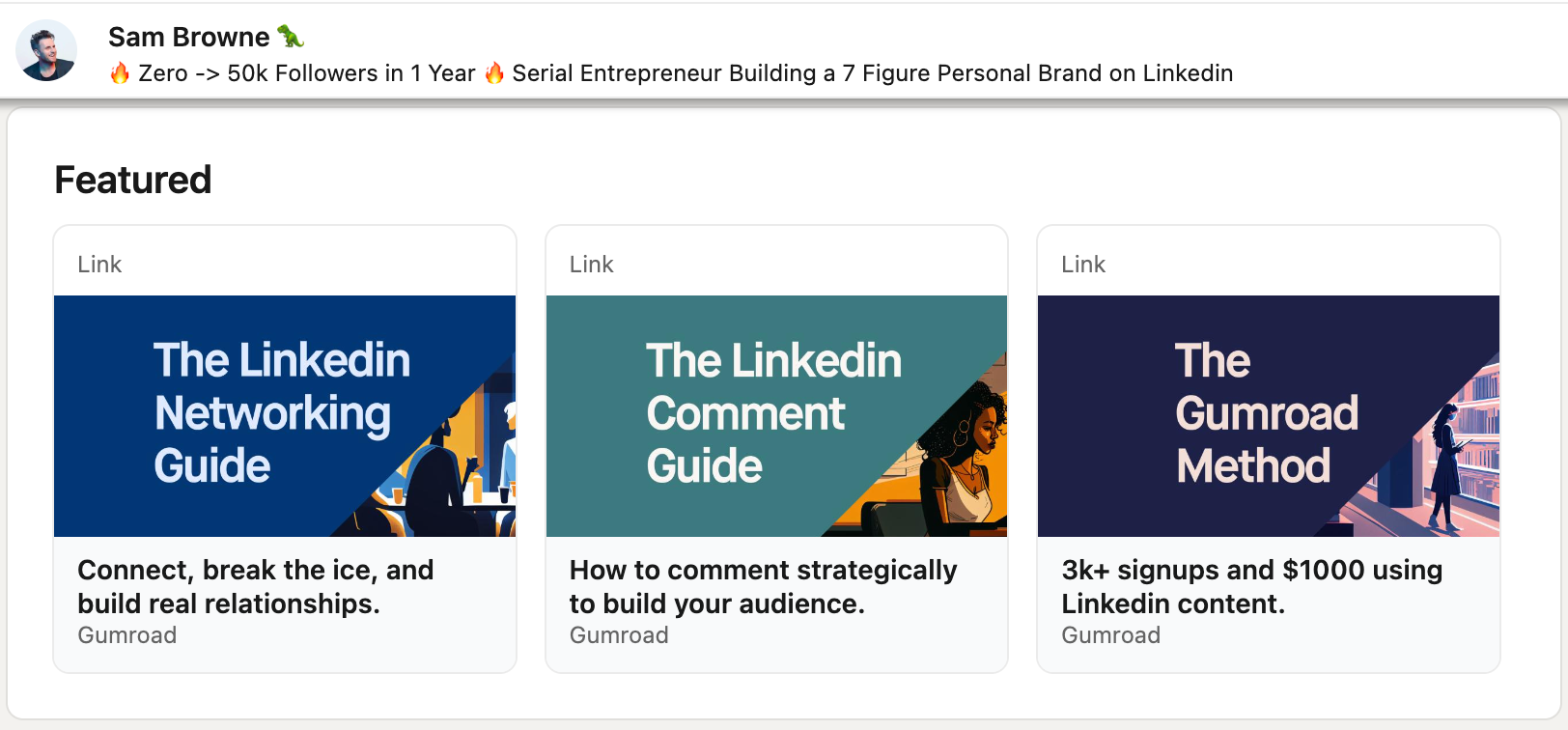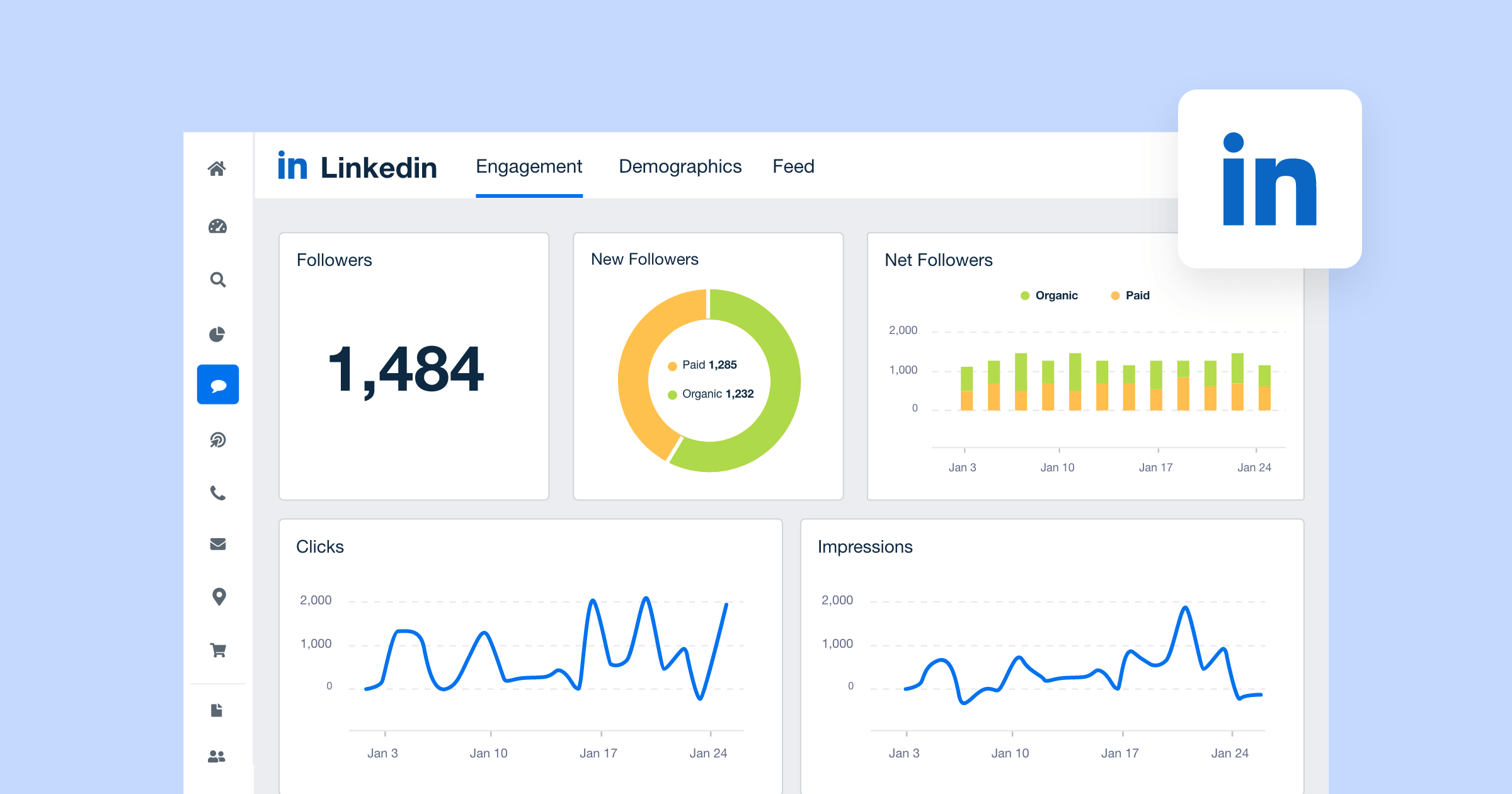LinkedIn boasts over 900 million members, and a significant portion of those are involved in business decision-making.
If you’re running a small business, these numbers aren’t just stats; they’re opportunities you must explore. But while LinkedIn is rich in potential, it’s also complex in its offerings.
How do you cut through the noise to make meaningful connections and grow your business?
In this article, we’ll talk about the key strategies that can help you optimize your small business LinkedIn profile. From setting up an effective business page to mastering the subtleties of networking, we’ve got actionable insights to make your LinkedIn efforts fruitful.
Want to make LinkedIn work for you? Let’s dive in.
1. Setting Up a Stellar LinkedIn Business Page
Think of your LinkedIn Business Page as your storefront in the digital world. A hastily put-together page can turn away potential customers, while a well-structured one can draw them in.
So, how do you set up a page that will work for your business?
Logo and Cover Image
Your logo should be easily identifiable. A professional cover image that resonates with your brand can set the right first impression.

About Us
Be concise yet informative. Tell people what your small business offers and why they should care, in 2-3 sentences max. For example, if you run a small digital marketing agency, your description could read: “Elevating brands through data-driven marketing strategies. Specializing in SEO, PPC, and content creation. Your growth, our mission.”
SEO Optimization
Believe it or not, LinkedIn pages can rank in Google searches. Include industry-relevant keywords in your About section to improve visibility.
Featured Content
Use this space to showcase your top-performing posts or important updates. It’s like your shop window—make it appealing.

CTA Button
Whether it’s a link to your latest blog post or your contact form, make it easy for visitors to take the next step with you.
Remember that setting up your LinkedIn Business Page is not a one-time task. It is a task that requires ongoing maintenance. Keep it updated with fresh content and regularly review performance metrics to ensure you’re reaching your target audience.

2. Quality Over Quantity: Content Strategy
In the rush to keep a consistent posting schedule, you may end up prioritizing volume over value. But when it comes to LinkedIn, quantity may help you get noticed, but only quality will let you build your trust and credibility.
Here’s how to strategize your content on LinkedIn for maximum impact:
Content Calendar
Creating a content calendar isn’t just an organizational tool; it’s a strategic asset. Plan themes for each month, align them with industry events, and identify specific KPIs you aim to hit with each post. This roadmap ensures your content aligns with your business objectives.
Purposeful Posts
Every post should have a predefined goal—to educate your audience about an industry trend, entertain them with behind-the-scenes glimpses, or engage them with thought-provoking questions. For instance, you could run a series called ‘Marketing Mondays’ where you decode complex marketing jargon into actionable insights.
Audience-Centric
Understanding your audience is crucial for crafting effective content. Say your small business focuses on selling handmade crafts in Austin, Texas. You can benefit by using a hyperlocal social media strategy, such as publishing a post like “Top 5 Hidden Craft Shops in Austin You Must Visit”. Such a piece will not only speak directly to your local audience but also position your business as a local expert.
Diverse Formats
Text is just one way to communicate. Incorporate how-to or animated videos, infographics for statistics, and polls for audience opinions. Just adding a image to your post can result in 98% more comments. This multi-format approach caters to different learning styles and increases overall engagement.
Consistency and Adaptability
While you should maintain a consistent posting schedule, be ready to adapt. If a particular type of content is driving engagement, make it a staple in your calendar.
Metrics that Matter
Vanity metrics like ‘likes’ and ‘shares’ can give you a morale boost, but don’t confuse them with ROI. You should track metrics like ‘click-through rate and ‘lead generation’ to assess the real business impact of your content strategy.
By being intentional with what and when you post, you can move beyond mere visibility to create meaningful interactions that contribute to your bottom line.
3. Personal Branding: The Game Changer
You might think LinkedIn is solely a stage for your business brand but don’t underestimate the power of personal branding.
It’s the secret ingredient that spices up your company’s image, providing a human touch that no corporate logo can match.
Here’s how to boost your personal brand, along with your business:
Thought Leadership
Establishing yourself as a thought leader isn’t about boasting about your successes—it’s about contributing value to your industry. Write LinkedIn articles that tackle common challenges in your field. For example, if you’re in the hospitality business, an article on “Redefining Customer Service in the Age of Digital Interaction” could draw considerable attention.
Employee Advocacy
Your employees are your best brand ambassadors. Encourage them to share company updates and participate in relevant LinkedIn groups. A simple ‘Employee of the Month’ feature could generate personal stories that resonate with your audience.
Personalized Outreach
Ditch the template messages. When you’re connecting with someone or thanking them for engaging with your content, be genuine and personal. Mention a detail from their profile or a post they recently shared to show you’re paying attention.
Consistent Messaging
Whether you’re posting an update, sharing a success story, or commenting on someone else’s post, maintain a consistent tone and style. This consistency reinforces your personal brand each time you hit ‘publish.’
Visual Consistency
Match your LinkedIn profile’s visual elements, like your profile picture and cover photo, with your company’s branding. This creates a cohesive visual story, making you instantly recognizable.
Engage, Don’t Broadcast
The essence of personal branding is in two-way conversations. Don’t just post and ghost. Interact with your audience and engage with them by responding in a timely manner. The more you engage, the more memorable your personal brand becomes.
Keep in mind that with expanding your network, the number of LinkedIn messages will also grow, so you must devote a certain amount of time to managing all your interactions.
Strategic Networking
The final goal of personal branding is to create meaningful relationships that benefit your business. Use LinkedIn’s ‘Search’ and ‘Alumni Tool’ to find people who align with your brand ethos and explore potential collaborations.
As inactive or irrelevant connection can harm your reach, try to keep your network up to date by learning how to remove LinkedIn connections in bulk.
4. Networking: Building Valuable Connections
LinkedIn is a treasure trove of professional contacts, but its value lies in forging genuine, mutually beneficial relationships.
Here’s a brief guide to mastering LinkedIn networking:
Who to Connect With
Before you hit that “Connect” button, be strategic. Target these groups:
- Industry Insiders. Professionals within your industry can help you with partnerships, insights, and referrals.
- Local Business Owners. For community support, local referrals, and possible collaborations.
- Potential Clients or Customers. You can directly showcase the value and benefits you bring and convert them through personalized engagement.
Personalized Connection Requests
Your first message sets the tone. A personalized note referencing a mutual acquaintance or shared interests can pave the way for meaningful interactions. No more “I’d like to add you to my professional network on LinkedIn.”

The Network Effect
Mutual connections aren’t just numbers; they’re precious networking resources. Leverage these relationships by seeking introductions or sparking a conversation based on mutual acquaintances. It’s professional networking, simplified.
Localized Strategy for Global Reach
Sure, LinkedIn is global, but pay attention to local opportunities. If you’re a small business owner in Boston, for example, share updates about local industry events or community activities. This localized touch can resonate more powerfully than broader content.
Utilize a B2B Phone Number Finder
In B2B marketing, direct communication can be highly effective. Using a B2B phone number finder tool can help you gather contact information for decision-makers in your industry. This allows you to reach out directly, fostering stronger relationships and increasing the chances of turning connections into clients. Integrating this tool into your networking strategy on LinkedIn can significantly enhance your outreach efforts, making your networking more targeted and efficient.
Engage in Groups
LinkedIn Groups aren’t just discussion forums; they’re networking hubs. You can contribute by posting value-driven content and engaging in discussions. This way, you can demonstrate expertise and gain visibility.
Balanced Content Sharing
Make sure you diversify your posts. Sharing quality content from various sources, including your insights and industry news, can position you as a thought leader without overwhelming your audience with self-promotion.
Strategic Follow-Ups
Sometimes, the magic happens after the first hello. Whether sharing an article relevant to a recent conversation or simply checking in, a well-timed follow-up can convert a lukewarm contact into a valuable connection.
Stay Organized with Notes
Keep tabs on who you’ve talked to and what you’ve talked about. LinkedIn’s ‘Notes’ feature offers a discreet way to annotate your connections, making future interactions more impactful.
5. LinkedIn Analytics: Measure to Grow
You can’t manage what you can’t measure. LinkedIn Analytics provides you with actionable insights to refine your strategies:

Visitor Analytics
Try to understand who’s viewing your business page and profile. This helps tailor your content to the audience already interested in you.
Engagement Metrics
Keep track of likes, shares, and comments to measure the effectiveness of your content. More engagement often signals better resonance with your audience.
Conversion Tracking
If you’re running LinkedIn ads, this feature is a must-use. Track how many LinkedIn users are taking the desired actions on your site, like filling out a contact form or making a purchase.
Competitor Benchmarks
LinkedIn lets you see how your page’s following and engagement rates stack up against similar pages. Use this information to set realistic goals and strategies.
Employee Advocacy
Measure how much your employees are amplifying your content. Their networks can serve as valuable channels for expanding your reach.
Conclusion: Your Next Move?
LinkedIn is no longer an optional add-on; it’s a must-have in your small business marketing toolkit. From setting up a killer business page to personalized networking and analytic deep dives, the five best practices and strategies in this article offer a robust framework for leveraging LinkedIn’s potential.
So, what’s your biggest takeaway? How will you implement these strategies to propel your business forward on LinkedIn? Your next big opportunity is a connection away.







